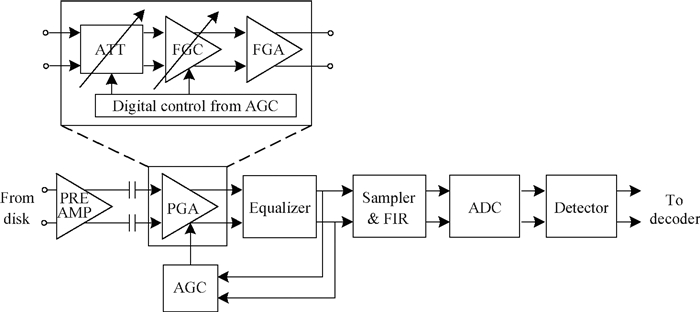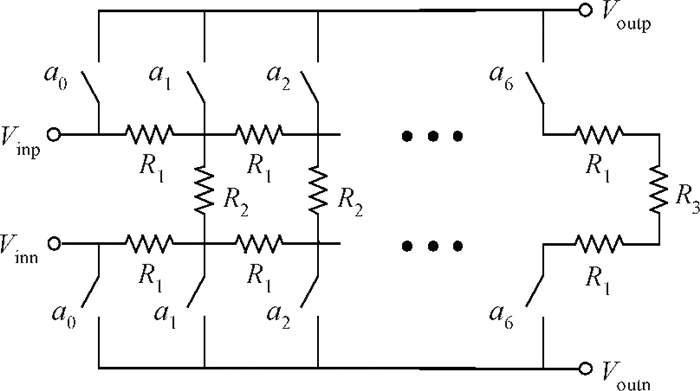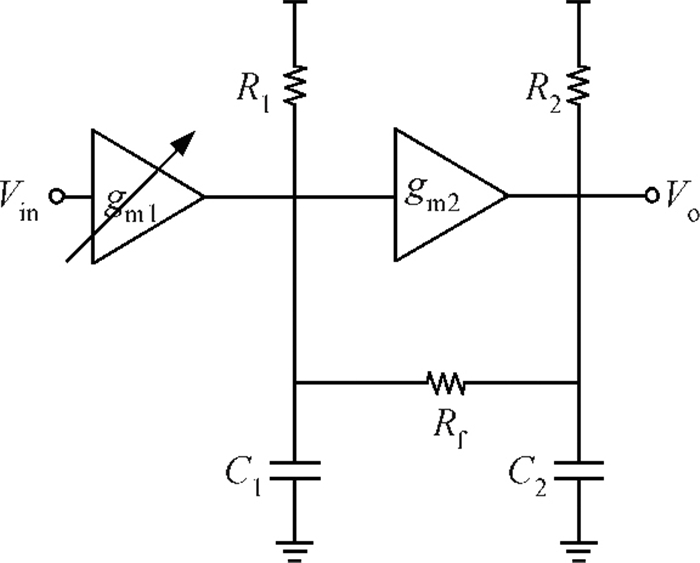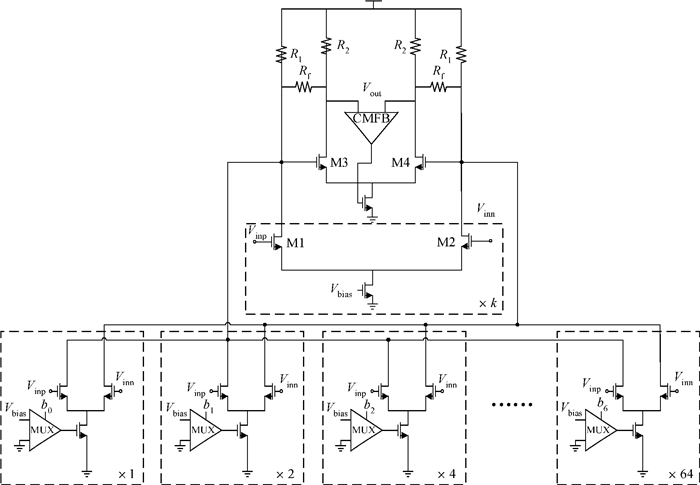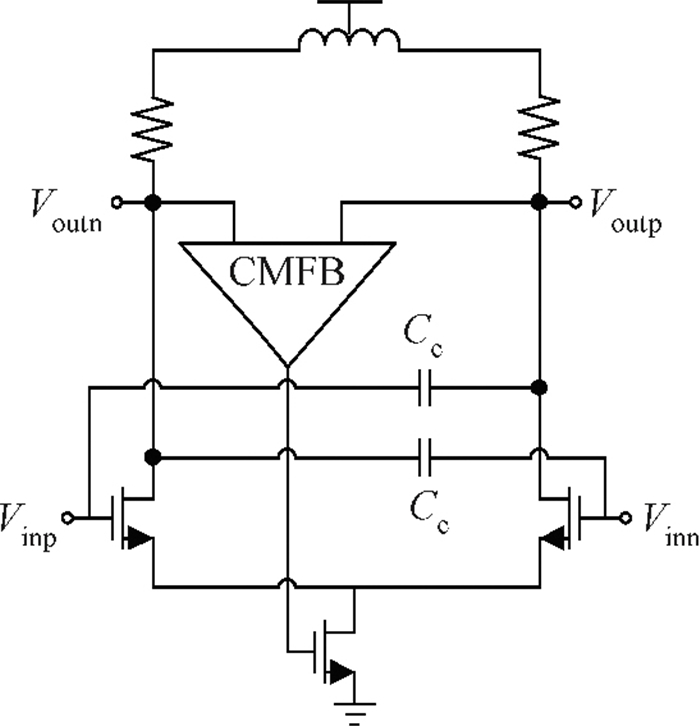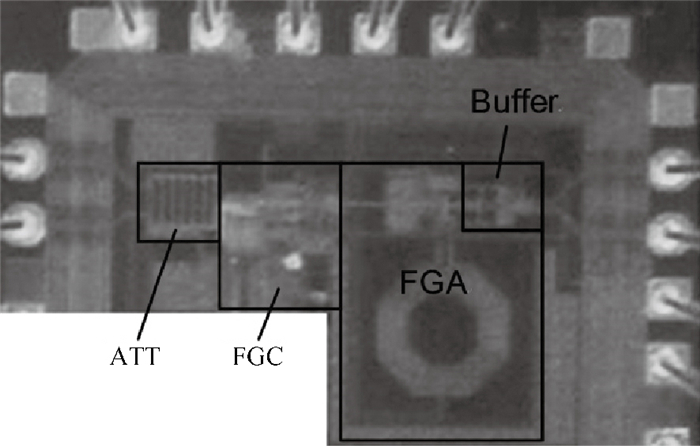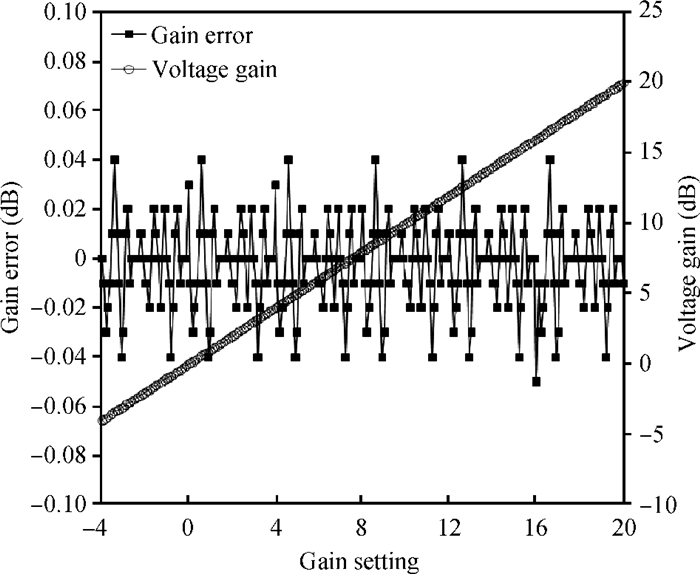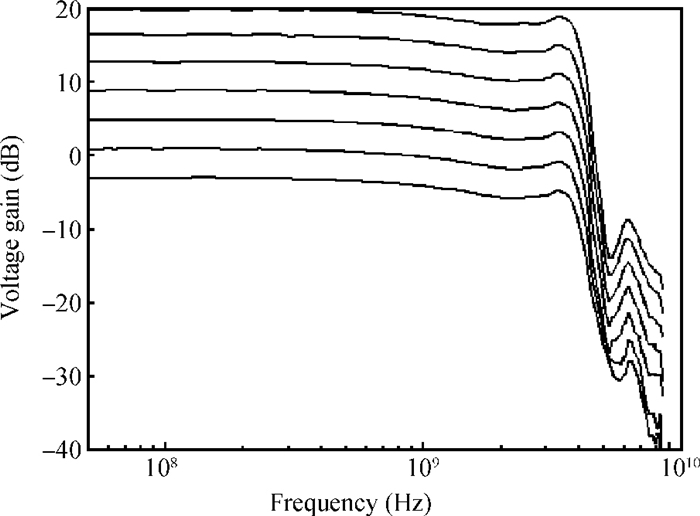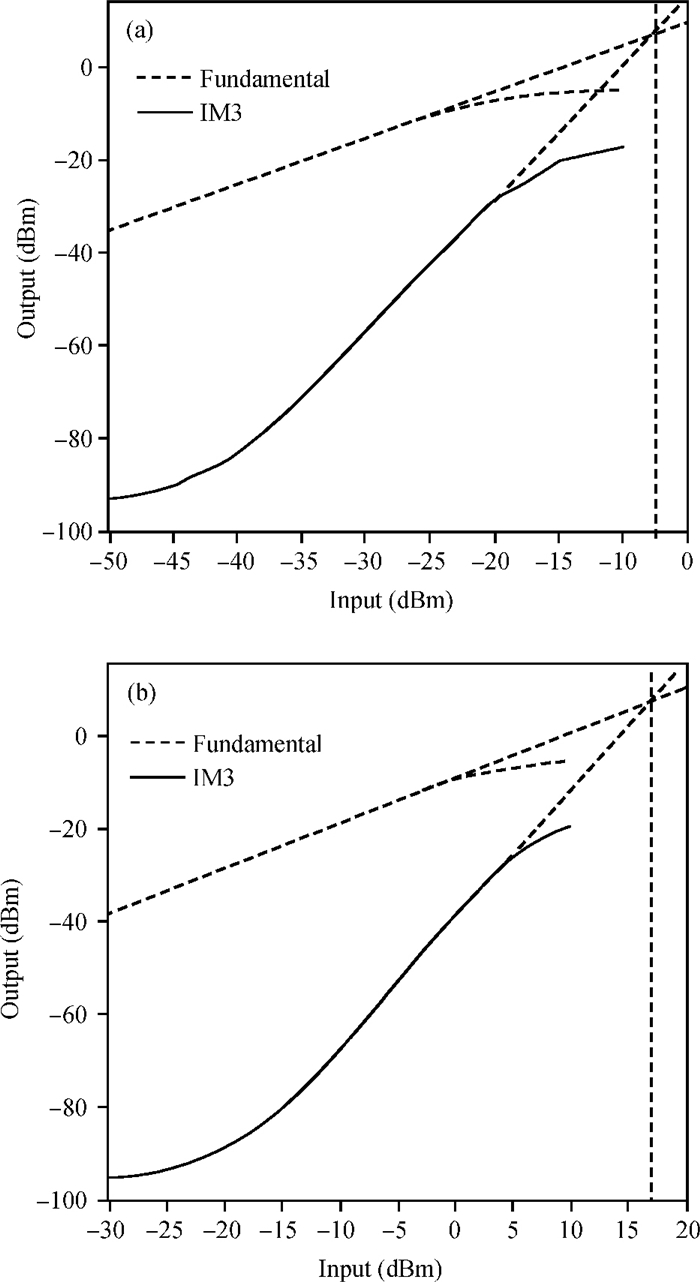| Citation: |
Nan Lin, Fei Fang, Zhiliang Hong, Hao Fang. A 3.8 GHz programmable gain amplifier with a 0.1 dB gain step[J]. Journal of Semiconductors, 2014, 35(3): 035004. doi: 10.1088/1674-4926/35/3/035004
****
N Lin, F Fang, Z L Hong, H Fang. A 3.8 GHz programmable gain amplifier with a 0.1 dB gain step[J]. J. Semicond., 2014, 35(3): 035004. doi: 10.1088/1674-4926/35/3/035004.
|
A 3.8 GHz programmable gain amplifier with a 0.1 dB gain step
DOI: 10.1088/1674-4926/35/3/035004
More Information
-
Abstract
A broadband programmable gain amplifier (PGA) with a small gain step and low gain error has been designed in 0.13 μm CMOS technology. The PGA was implemented with open-loop architecture to provide wide bandwidth. A two-stage gain control method, which consists of a resistor ladder attenuator and an active fine gain control stage, provides the small gain step. A look-up table based gain control method is introduced in the fine gain control stage to lower the gain error. The proposed PGA shows a decibel-linear variable gain from -4 to 20 dB with a gain step of 0.1 dB and a gain error less than ±0.05 dB. The 3-dB bandwidth and maximum ⅡP3 are 3.8 GHz and 17 dBm, respectively. -
References
[1] Yoo S J, Ravindran A, Ismail M. A low voltage CMOS transresistance-based variable gain amplifier. IEEE International Symposium on Circuits and Systems, 2004:809 http://ieeexplore.ieee.org/xpl/abstractKeywords.jsp?reload=true&arnumber=1328318&contentType=Conference+Publications[2] Lin N, Fang F, Hong Z L, et al. A CMOS broadband precise programmable gain amplifier with bandwidth extension technique. IEEE Asian Solid-State Circuits Conference, 2011:225 http://ieeexplore.ieee.org/xpl/articleDetails.jsp?reload=true&arnumber=6123643&punumber%3D6118260[3] Duong Q H, Le Q, Kim C W, et al. A 95-dB linear low-power variable gain amplifier. IEEE Trans Circuits Syst Ⅰ, Regular Papers, 2006, 47(8):1648 http://ieeexplore.ieee.org/stamp/stamp.jsp?tp=&arnumber=1673635&userType=[4] Nguyen H H, Duong Q H, Lee S G. 84 dB 5.2 mA digitally-controlled variable gain amplifier. Electron Lett, 2008, 44(5):344 doi: 10.1049/el:20080135[5] Nguyen H H, Nguyen H N, Lee J S, et al. A binary-weighted switching and reconfiguration-based programmable gain amplifier. IEEE Trans Circuits Syst Ⅱ, Express Briefs, 2009, 56(9):699 doi: 10.1109/TCSII.2009.2027958[6] Calvo B, Celma S, Aznar F, et al. Low-voltage CMOS programmable gain amplifier for UHF applications. Electron Lett, 2007, 43(20):1087 doi: 10.1049/el:20071140[7] Lazavi B. Design of integrated circuits for optical communications. Boston:McGraw-Hill, 2003[8] Iwon K, Lee K. An accurate behavioral model for RF MOSFET linearity analysis. IEEE Microw Wireless Compon Lett, 2007, 17(12):897 doi: 10.1109/LMWC.2007.910518[9] Bastos J, Steyaert M, Sansen W. A high yield 12-bit 250-MS/s CMOS D/A converter. IEEE Custom Integrated Circuits Conference, 1996:431 http://ieeexplore.ieee.org/xpls/abs_all.jsp?arnumber=510591[10] Haines G W, Mataya J A, Marshall S B. IF amplifier using Cc compensated transistors. ISSCC Dig Tech Papers, 1968:120 http://ieeexplore.ieee.org/xpl/abstractAuthors.jsp?reload=true&arnumber=1154641[11] Wang Y, Afshar B, Cheng T Y, et al. A 2.5 mW inductorless wideband VGA with dual feedback DC-offset correction in 90 nm CMOS technology. IEEE RFIC Symp Dig, 2008:91 doi: 10.1088/1674-4926/33/1/015009[12] D'Amico S, Spagnolo A, Donno A, et al. A 9.5 mW analog baseband RX section for 60 GHz communications in 90 nm CMOS. IEEE RFIC Symp Dig, 2011:1 http://ieeexplore.ieee.org/document/5940689/[13] Lee H D, Lee K A, Hong S. A wideband CMOS variable gain amplifier with an exponential gain control. IEEE Trans Microwave Theory Tech, 2007, 55(6):1363 doi: 10.1109/TMTT.2007.896787[14] Liu Chang, Yan Yuepeng, Goh Wangling, et al. A 10-Gb/s inductor-less variable gain amplifier with a linear-in-dB characteristic and DC-offset cancellation. Journal of Semiconductors, 2012, 33(8):085003 doi: 10.1088/1674-4926/33/8/085003 -
Proportional views





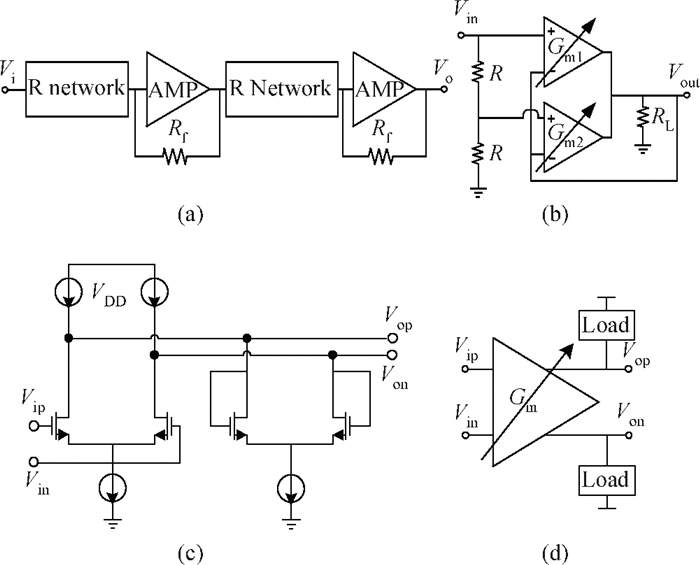
 DownLoad:
DownLoad:
